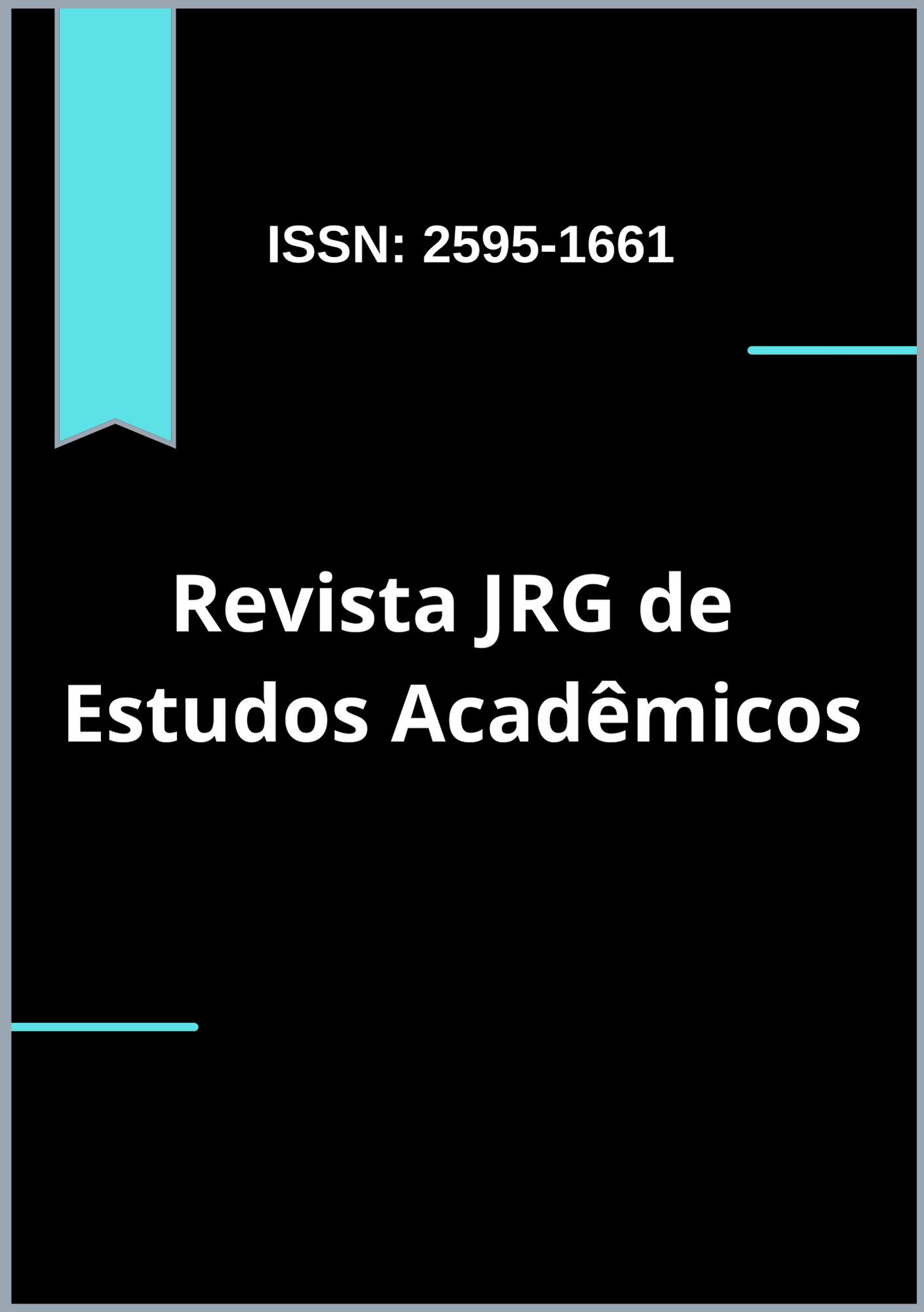Golden Material in Mathematics Education for Deaf Students: Impacts and Strategies
DOI:
https://doi.org/10.55892/jrg.v7i15.1411Keywords:
Golden Material, Deaf students, Mathematics, TeachingAbstract
The Golden Material is a concrete teaching resource that helps teach mathematics by converting abstract concepts into more tangible ones through visual and tactile representations, thus favoring a differentiated sensory approach to mathematical learning for deaf students. Thus, this study investigates the impact of using the Golden Material in teaching mathematics to deaf students, highlighting its benefits, challenges and specific adaptation strategies. The research explores how to adapt the use of this material with the use of contrasting colors, complementary visual resources and the translation of mathematical concepts into Brazilian Sign Language (Libras), favoring a deeper and more inclusive understanding. The importance of continuing teacher training to promote inclusive pedagogical practices and the efficient use of assistive technologies was also highlighted, ensuring that all students, regardless of their hearing limitations, have access to quality mathematics education. Furthermore, future directions are proposed for investigating the long-term impact of the Golden Material on the academic development of deaf students and the evaluation of teacher training strategies that can increase the effectiveness of the use of this resource in the context of inclusive education.
Downloads
References
BANDEIRA, Denise. Material Didático: conceito, classificação geral e aspectos da elaboração. In: BANDEIRA, Denise. Materiais Didáticos. Curitiba: IESDE, 2009. p. 456.
COSTA, Magda Suely Pereira. Maria Montessori e seu método. Linhas Críticas, Brasília, v. 7, n. 13, p. 305-320, jul./dez., 2001. Disponível em: https://periodicos.unb.br/index.php/linhascriticas/article/view/2914. Acesso em: 09 abr. 2024.
FRAZ, Joeanne Neves. Tecnologia assistiva e educação matemática: experiências de inclusão no ensino e aprendizagem da matemática nas deficiências visual, intelectual e auditiva. Revista de Educação Matemática, São Paulo, v. 15, n. 20, p. 523-547, set./dez. 2018. Disponível em: https://www.revistasbemsp.com.br/index.php/REMat-SP/article/view/248. Acesso em: 10 abr. 2024.
FREITAS, Olga. Equipamentos e materiais didáticos. Brasília: Universidade de Brasília, 2007. 132 p.
GALVÃO FILHO, Teófilo A.. A Tecnologia Assistiva: de que se trata? In: MACHADO, G. J. C.; SOBRAL, M. N. (Orgs.). Conexões: educação, comunicação, inclusão e interculturalidade. 1 ed. Porto Alegre: Redes Editora, p. 207-235, 2009.
LIBÂNEO, José Carlos. Educação Escolar: políticas, estrutura e organização. 2. ed. São Paulo: Cortez, 2005.
MOURA, Josenildo Silva de; OLIVEIRA, Ítalo Augusto Albuquerque de. O Ensino da adição e subtração no Ensino Fundamental com o auxílio do Material Dourado. Revista Multidebates, Palmas, v. 4, n. 5, p. 95-108, ago. 2020. Disponível em: https://revista.faculdadeitop.edu.br/index.php/revista/article/view/294. Acesso em: 10 abr. 2024.
OLIVEIRA, Adriane Silva de Abreu; ABREU, Cristiana Silva de; BRAUNA, Mayara Priscila; OLIVEIRA, Neuzenir Silva de Abreu; OLIVEIRA, Santino de. Educação Especial: os desafios da inclusão de alunos surdos no contexto escolar. Revista Educação Pública, Rio de Janeiro, v. 22, n. 18, maio 2022. Disponível em: https://educacaopublica.cecierj.edu.br/artigos/22/18/educacao-especial-os-desafios-da-inclusao-de-alunos-surdos-no-contexto-escolar. Acesso em: 08 abr. 2024.
PRADO, Rosana; ANTONIO, Luís Cláudio de Oliveira; Materiais Didáticos para Surdos: Entre os Remendos das Adaptações e a Potencialidade das Criações. In: Gildete da Silva Amorim M. Francisco; Gláucio de Castro Júnior. (Org.). Formação de professores e intérpretes educacionais para produção de materiais bilíngues. 1. ed. Petrópolis: Arara Azul, 2023, p. 183-205.
RODRIGUES, Patrícia Rocha; ALVES, Lynn Rosalina Gama. Tecnologia Assistiva – uma revisão do tema. Holos, [S.I], v. 6, n. 29, p. 170-180, dez. 2013. Disponível em: https://www2.ifrn.edu.br/ojs/index.php/HOLOS/article/view/1595. Acesso em: 12 abr. 2024.
SALVINO, Ligiane Gomes Marinho. Tecnologia Assistiva no ensino de Matemática para um aluno cego do Ensino Fundamental: desafios e possibilidades. 2017. 157 f. Dissertação (Mestrado em Ensino de Ciências e Educação Matemática) – Universidade Estadual da Paraíba, Campina Grande, 2017. Disponível em: http://tede.bc.uepb.edu.br/jspui/handle/tede/2906. Acesso em: 12 abr. 2024.
SILVA, Maria Inêz Vasconcelos da; FLORES, Andrezza Santos. Um olhar reflexivo para o uso e aplicabilidade da tecnologia assistiva na educação matemática. TICs & EaD em Foco, São Luís, v. 6, n. 2, p. 77–90, jul./dez. 2020. Disponível em: https://www.uemanet.uema.br/revista/index.php/ticseadfoco/article/view/501. Acesso em: 12 abr. 2024.
SILVEIRA, Joveliana Amado da. Material Dourado de Montessori: trabalhando com os algoritmos da adição, subtração, multiplicação e divisão. Ensino em Re-Vista, [S.I], v. 6, n. 1, p. 47-63, jun. 2010. Disponível em: https://seer.ufu.br/index.php/emrevista/article/view/7836. Acesso em: 10 abr. 2024.
SOUZA, Aldileia da Silva; MOREIRA, Geraldo Eustáquio. As contribuições de Maria Montessori à Educação Matemática: o uso de materiais didáticos para o processo de ensino e aprendizagem. Temporis, [S.I], v. 20, n. 1, p. 1-22, jan. 2020. Disponível em: https://www.revista.ueg.br/index.php/temporisacao/article/view/8988. Acesso em: 10 abr. 2024.











































